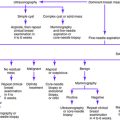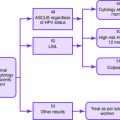Chapter 15 HAIR LOSS
Hair loss, or alopecia, can be classified in various ways, but the most common classification distinguishes nonscarring from scarring alopecia. The hair loss of scarring alopecia is permanent, whereas that of nonscarring alopecia usually is reversible. When a patient presents with hair loss, it is important to determine whether he or she is experiencing hair shedding, which is significant amounts of hair coming out, or hair thinning, in which more scalp is visible without noticeable amounts of hair falling out.
Cicatricial alopecia results from a condition that damages the scalp and hair follicle. Examination typically reveals plaques of erythema with or without scaling. Syphilis, tuberculosis, acquired immunodeficiency syndrome (AIDS), herpes zoster, discoid lupus erythematosus, sarcoidosis, radiation therapy, and scalp trauma such as burns have been linked to cicatricial alopecia. If the cause of the disorder is not apparent, a punch biopsy of the scalp may be helpful in making the diagnosis.
Causes of Hair Loss
Key Historical Features
✓ Broken hair versus hair shed at the roots
✓ Grooming practices (chemical treatments such as relaxers, bleaching, coloring, or blow-drying on high heat)
✓ Physical or emotional stressors within the previous 3 to 6 months
✓ Family history of hair loss, including hair loss in maternal relatives, paternal relatives, siblings, and children
✓ Menstrual irregularities, infertility, hirsutism, or acne in women suspected of having hyperandrogenism
Key Physical Findings
Suggested Work-Up
| Hair pull test | Fifty to 60 hairs are grasped between the thumb and the index and middle fingers and then gently but firmly pulled. A negative test result is six or fewer hairs obtained. A positive result is more than six hairs obtained and indicates a process of active hair shedding. Microscopic evaluation of the hairs may be performed. The hair pull test is helpful in suspected cases of telogen effluvium, tinea capitis, systemic diseases, alopecia areata, alopecia totalis, alopecia universalis, and environmental factors. |
| Serologic test for syphilis | Recommended for all patients with unexplained hair loss to rule out syphilis |
Additional Work-Up
| KOH preparation for fungal elements or fungal culture of skin | In patchy forms of alopecia, to rule out fungal infection |
| Total testosterone, free testosterone, dehydroepiandrosterone sulfate, and prolactin level measurements | In women suspected of having hyperandrogenism |
| Thyroid-stimulating hormone (TSH) measurement, rapid plasma reagin (RPR) test, prolactin measurement, complete blood cell count (CBC), chemistry profile, measurement of erythrocyte sedimentation rate (ESR), antinuclear antibody (ANA) measurement, rheumatoid factor measurement, and hair pluck test for telogen:anagen ratio | In patients with telogen effluvium |
| CBC, ESR measurement, ANA measurement, rheumatoid factor measurement | In patients with alopecia areata |
| KOH examination or culture swab | In suspected cases of tinea capitis |
| Scalp biopsy | If the cause is unclear or if the patient fails to improve after appropriate treatment |




